West Chop and East Chop
There were a couple of lighthouses on Martha’s Vineyard, with whom we have only met in passing: the white towers of West Chop Light and East Chop Lights. They mark, correspondingly, the west and the east sides of the entrance to Vineyard Haven Harbor.
West Chop and East Chop are two peninsulas surrounding the entrance to the harbor. The word “chop” was confusing to me here. It has multiple meanings; the only one of them remotely applicable seemed to be the wave action with mean, short waves — particularly of the wind-against-current kind.
Turns out that there is another meaning to “chop” — either old, or British, or both. It just means an entrance to a body of water (like, for example, English Channel). Now the names suddenly make sense.
We started our chop acquaintance with West Chop Light. As we were sailing from Menemsha to Vineyard Haven, we could see it from the two sides: first from Vineyard Sound, and then, around the corner, from Nantucket Sound, at the approach towards Vineyard Haven Harbor.
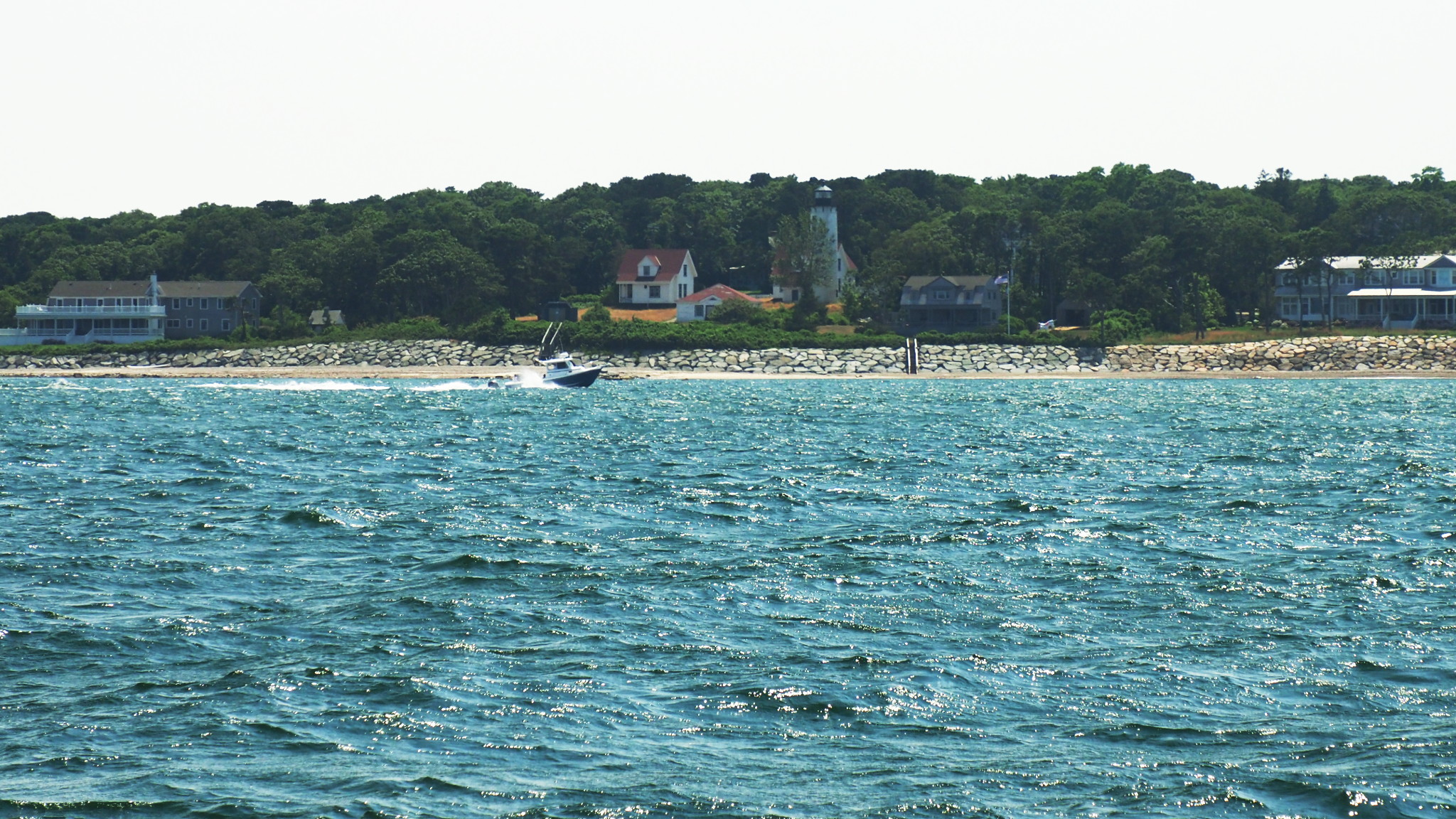
In the nineteenth century, the harbor of Vineyard Haven (then called Holmes Hole) was the busiest harbor on Martha’s Vineyard, and the local sailors were understandably upset when Edgartown received the first lighthouse on the island (in 1801). As they demanded action from the government, years went by. Finally, in 1817 there was a lighthouse build at West Chop. This photo shows its second incarnation, an octagonal tower built in 1846.

As it sometimes happens in New England (we saw the same thing happened to Marblehead Light), a lighthouse is originally built in a remote place, and then, after many years, finds itself in a busy neighborhood. West Chop became a summer resort with larger and larger houses, and by the early 1890s, they were sufficiently obscuring the light, so an urgent action was needed. And surprisingly, the government took an action right away. In 1891, they built a new, much higher lighthouse at West Chop: a 45-foot round brick tower, which still stands there. The US Coast Guard uses the former keeper’s house — with the read roof on the photo above — as living quarters for the Menemsha Station commander.
West Chop Light has a somewhat uncommon light pattern — it’s a white occulting light, meaning it’s on most of the time, and then periodically (every 4 seconds) briefly turns off. In effect, regular lighthouses flash light, and the occulting ones flash darkness — sounds quite occult to me!
In addition it has a “red sector” — when approached from a certain direction, the light changes from white to red to indicate that going there is a bad idea. If you look at the chart, you’ll see that the red sector protects from the rocks next to East Chop (and from East Chop, for that matter).
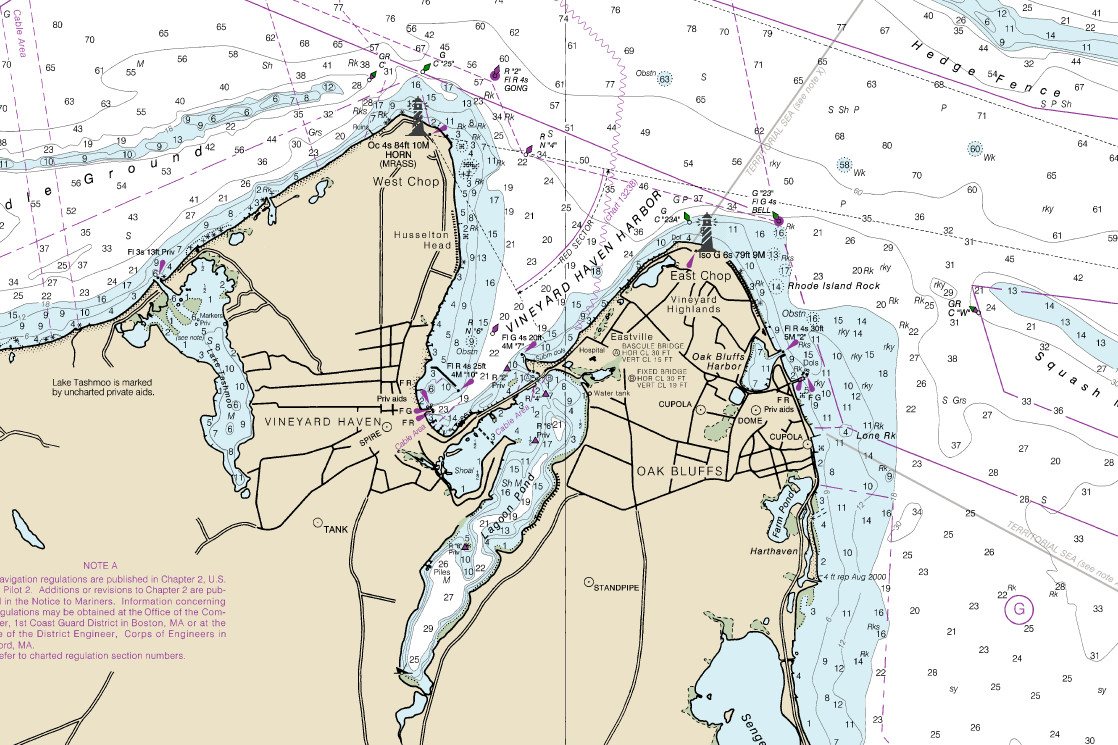
And on this photo, taken as we were rounding West Chop, heading into Vineyard Haven Harbor, you can clearly see how the red sector is implemented — just by strategically putting a piece of red glass in the right spot.
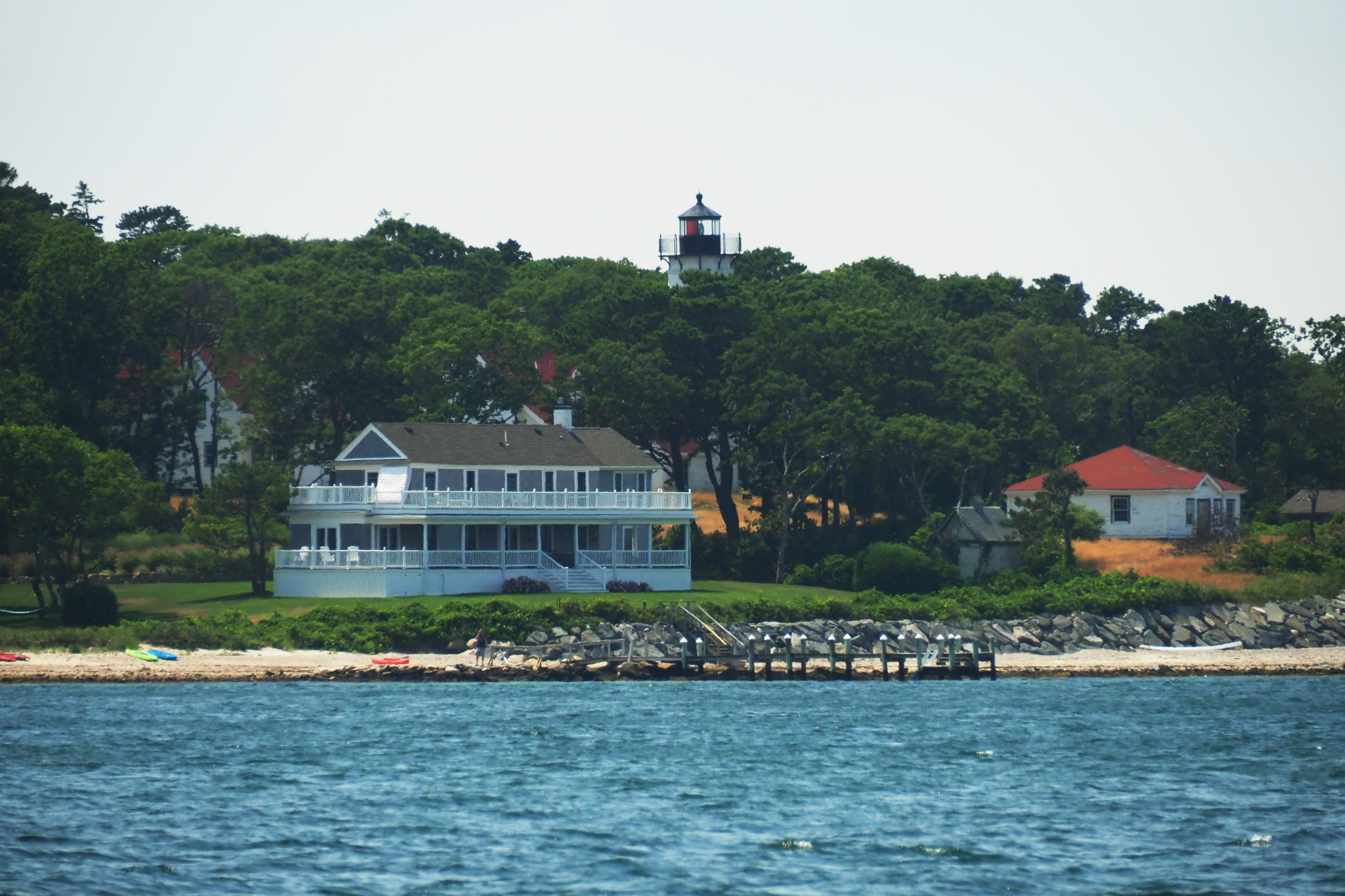
As we were spending the night at anchor in Vineyard Haven Harbor, I couldn’t see West Chop Light (which was probably hiding behind trees and buildings). Instead, to the right I could see the light of the East Chop lighthouse, a six-second green that is also using an uncommon pattern: isophase, equal periods of light and darkness (three seconds each in this case).
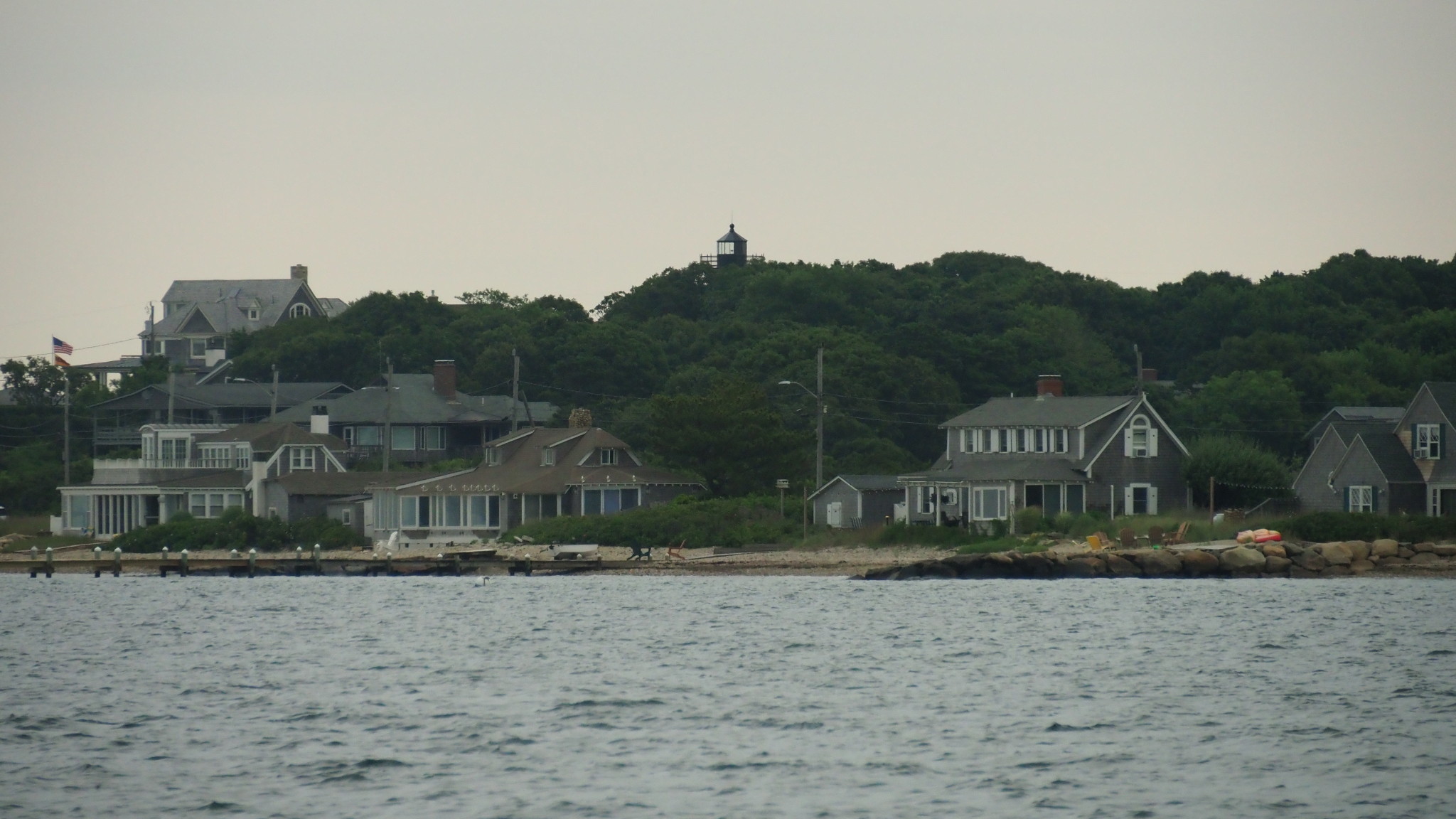
After spending two nights in Vineyard Haven, we cast off and headed out of the harbor and towards Edgartown. The wind, promising in the morning, had died off as we rounded East Chop, and at the same time some malignant rain clouds started converging above us. Before the showers started, though, we spent some time peacefully drifting around, enjoying the views and taking photos of East Chop Light.
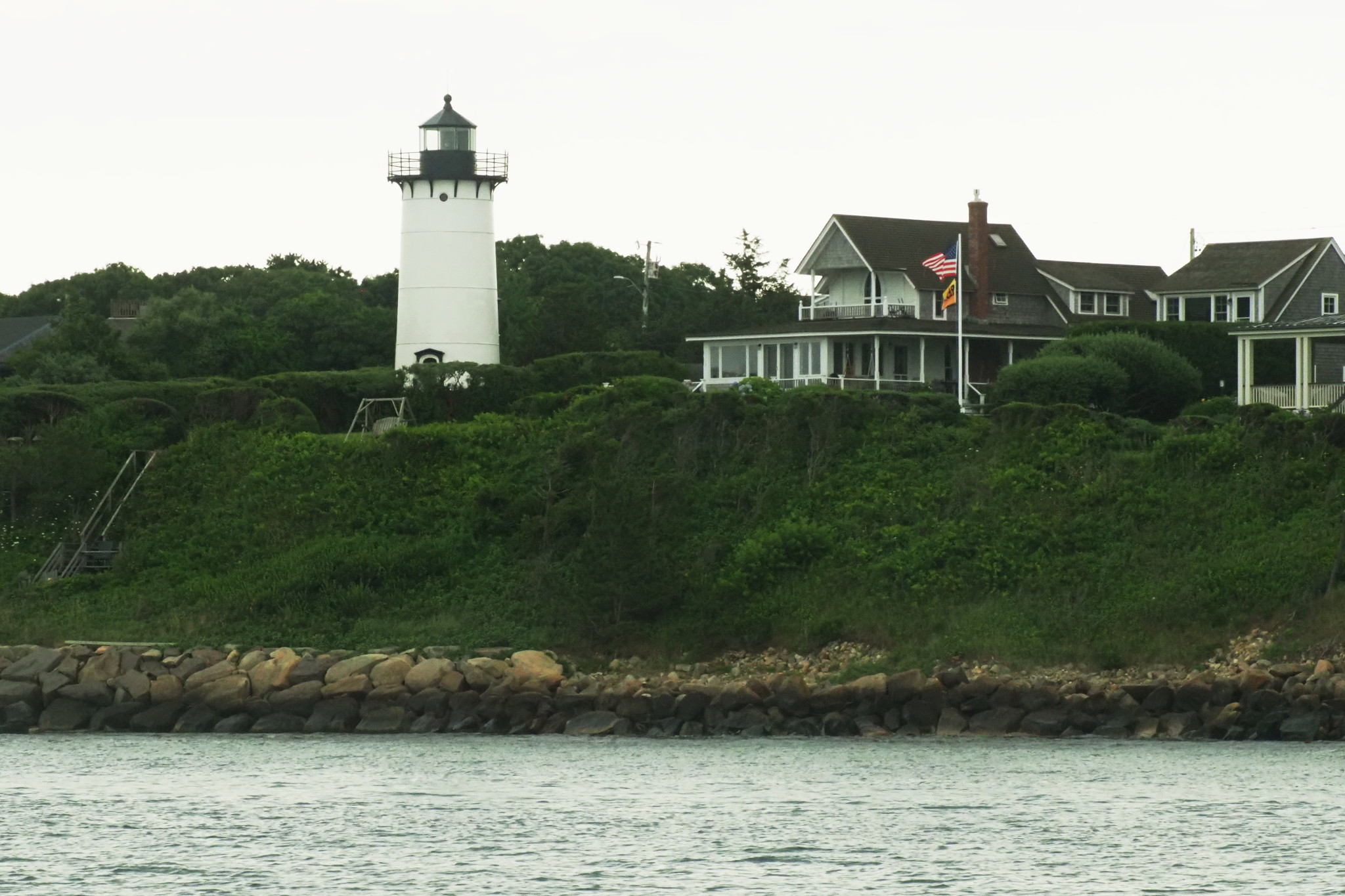
In the nineteenth century the local mariners kept petitioning the federal authorities about building a lighthouse at East Chop. The authorities, though, apparently believed that West Chop Light, established in 1817, was enough for the harbor.
In 1869 a local captain, one Silas Daggett, had enough of this federal stonewalling and just built a lighthouse himself. Its ongoing operations were funded through donations.
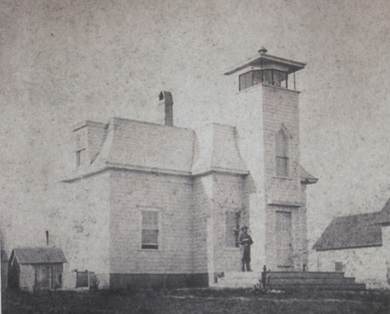
That, somehow, put the federal government into motion, and it was soon determined that yes, a lighthouse at East Chop would be a quite reasonable idea! The government purchased the land and the lighthouse from Captain Daggett, but then they determined that the lighthouse was not built up to the federal lighthouse standards. They were promptly demolished, and a round, 40-feet-tall cast-iron tower was built instead in 1878, along with a new keeper’s house. The tower still stands. For over hundred years it was painted reddish-brown, and affectionately known among the locals as the “Chocolate Lighthouse”.
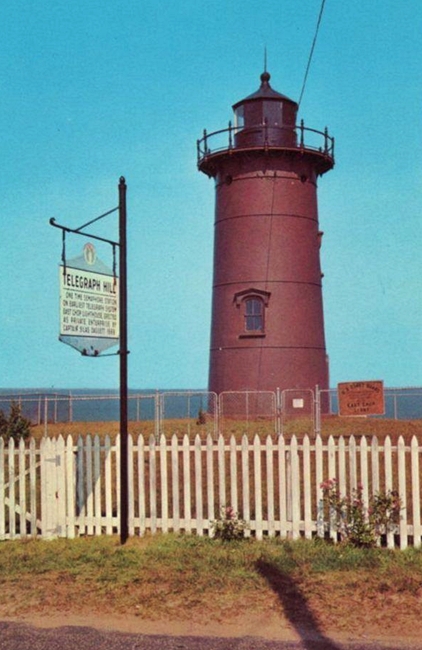
(Since 1988 it is painted white, like the wast majority of the US lighthouse towers: it helps control the heat and the condensation during warmer months.)
East Chop is actually located not in Vineyard Haven, but in Oak Bluffs, the next town over. These days it is managed (along with Edgartown Light) by Martha’s Vineyard Museum. The lighthouse is open to public when there is no coronavirus around, and its grounds are landscaped into a beautiful park. Looks like it’s just 1.5 miles away from Oak Bluffs Harbor; we definitely need to walk or bike there next time we are in town!
Back to our July cruise: that was the extent of our acquaintance with the chop lights. Abrupt showers forced us to put away our cameras, and then we were on the way to Edgartown and its lighthouses.
A month later, my wife and I were staying for a few days in Falmouth, next to Falmouth Harbor and Vineyard Sound. At nights, we would go for a walk along the shore and the beaches and look at the dark waters of the Sound. There, we could see a confusing multitude of buoy lights; they were so many that it would be hard to make sense out of their lights even with a nautical chart.
But then, way brighter and way clearer, we could see the two familiar lights across the Sound: the isophase green of East Chop Light and the occulting white of West Chop Light. Like some shining punctuation marks of the nautical language, they framed the otherwise invisible entrance to Vineyard Haven Harbor.
It felt good to be able to read this language.
Subscribe via RSS